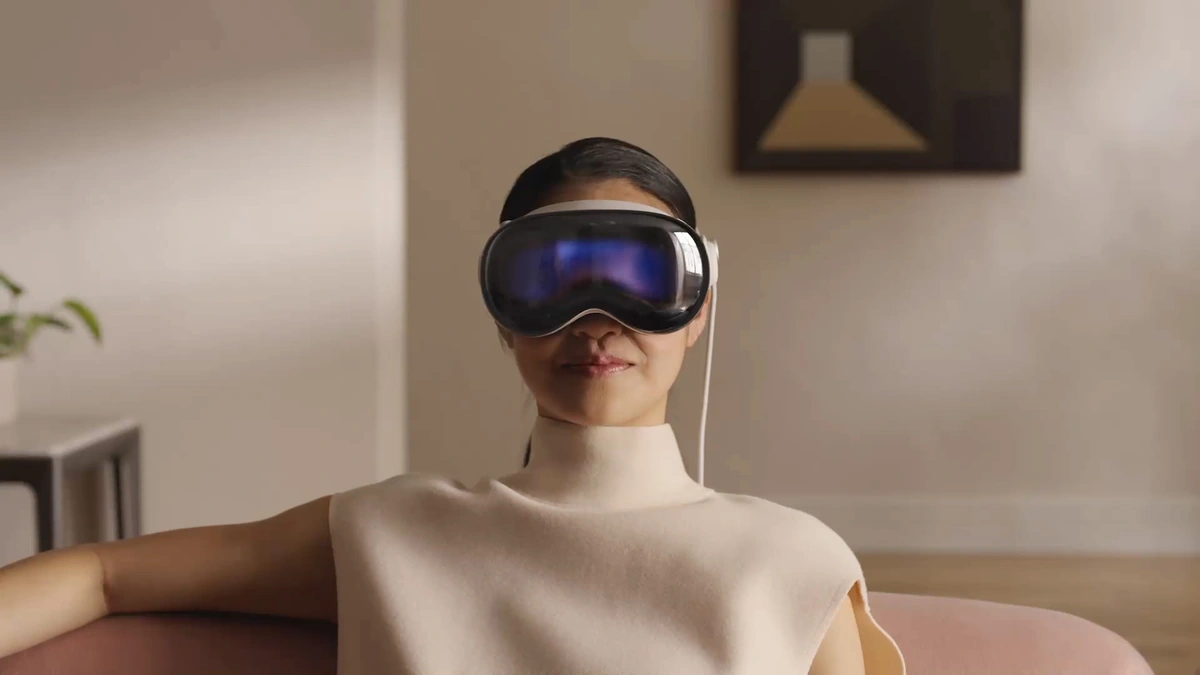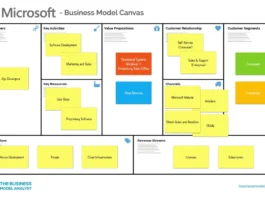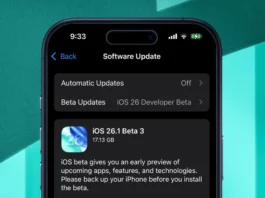Okay, tech enthusiasts, let’s huddle up. You know how everyone was buzzing about the possibility of a more affordable Apple Vision Headset ? Well, the winds have shifted. Apple has reportedly put the brakes on that project, and instead, is laser-focused on developing smart glasses. Let’s be honest, this news feels like a plot twist in our favorite tech drama, doesn’t it?
But before you start mourning the budget-friendly VR dreams that might never be, let’s dig into why this decision matters. It’s not just about Apple changing its mind. It’s about a fundamental shift in their strategy and how they see the future of augmented reality (AR). And trust me, as someone who’s been following Apple’s moves for years, this has some big implications. It’s a bit like when they killed the headphone jack – controversial, but ultimately, a sign of where they see the world heading. In this case, towards sleek, everyday wearables rather than immersive, but bulky, VR experiences.
Why the Pivot? Reading Between the Lines

So, why ditch the budget Vision Headset? Several factors are likely at play. First, let’s acknowledge the elephant in the room: the current Apple Vision Pro’s hefty price tag. It’s premium, undeniably. And that premium price makes it inaccessible to, well, most people. But here’s the thing: building a truly “budget” version that still delivers a worthwhile Apple experience is incredibly tough. Compromises would have to be made, and Apple is fiercely protective of its brand image and user experience.
Think about it: if they released a cheaper headset that felt clunky or underpowered, it could tarnish the reputation of the entire Vision product line. Better to focus on a high-end experience for now and revisit affordability later. This is classic Apple – controlling the narrative and prioritizing quality, even if it means sacrificing short-term market share. As per industry analysis reports, Apple is always known for making calculated risks. The other reason that I believe is the tech giant wants to make some advancements with the augmented reality market .
But there’s more! Smart glasses represent a fundamentally different vision for AR. They’re less about replacing your reality and more about enhancing it. Imagine getting discreet notifications, turn-by-turn navigation, or even real-time language translation right in front of your eyes, all while maintaining eye contact and staying present in the real world. This is the promise of smart glasses, and it’s a much more compelling vision for everyday use than strapping a VR headset to your face.
The Smart Glasses Gamble | A Long-Term Vision?
Apple is betting that smart glasses will be the future of AR, and it’s a long-term play. Developing this technology is complex. Miniaturization, battery life, display clarity, and seamless integration with everyday life are all major hurdles. But if anyone has the resources and the design expertise to crack this nut, it’s Apple. I initially thought that these were just simple rumors, but there is a lot of talk within the augmented reality glasses industry, this could very well be Apple’s next big adventure.
And, let’s be real, smart glasses are just plain cooler. They’re less intrusive, more socially acceptable, and have the potential to seamlessly blend into our lives. They are a fashion statement as much as a tech gadget. This shift also aligns with Apple’s broader strategy of integrating technology into our lives in a more subtle and natural way – think AirPods, Apple Watch, and now, potentially, Apple Glasses.
But what about the existing Apple Vision Pro ? I think it’s not going anywhere. It will still serve as a high-end, niche product for professionals, developers, and early adopters who want the most immersive VR/AR experience possible. It’s a platform for innovation and experimentation, pushing the boundaries of what’s possible. And it provides crucial data and feedback that will inform the development of future Apple products, including, you guessed it, those smart glasses.
What This Means for the Future of AR in India
For us in India, this strategic shift has some interesting implications. While the initial Vision Pro price tag put it out of reach for most consumers, the promise of more affordable AR through smart glasses is definitely exciting. India is a mobile-first nation, and the idea of having AR experiences seamlessly integrated into our daily lives via stylish glasses is very appealing.
Think about the possibilities: real-time language translation for tourists, AR-powered navigation for crowded city streets, or even enhanced learning experiences for students. And considering the booming tech and developer scene in India, there’s a huge potential for creating innovative AR apps and experiences tailored to the Indian market. I think that the extended reality ecosystem in India is in for a treat.
Of course, there are challenges. The cost of entry for developers, the availability of reliable internet connectivity, and the need for culturally relevant content are all factors that need to be addressed. But with the right approach, smart glasses could revolutionize how we interact with technology and the world around us in India. The biggest challenge I see is to create a virtual reality experience that is affordable and easily available for everyone.
So, while the dream of a budget Vision Headset might be on hold, the future of AR at Apple, and potentially in India, looks brighter than ever. It’s a calculated gamble, a long-term vision, and a bet on the power of smart glasses to transform our lives. And you know what? I’m excited to see where it leads.
If I’m being honest, the iPhone Pro Max has seen its own share of production speculation. But I’m looking forward to Apple paving the way for AR technology with this shift.
Will Other Companies Follow Suit?
The big question now is whether other tech giants will follow Apple’s lead. Will we see a similar shift towards smart glasses and a de-emphasis on standalone VR headsets? It’s certainly possible. Apple has a way of setting trends, and its competitors often scramble to catch up.
However, it’s also important to remember that different companies have different strengths and strategies. Some may see a greater opportunity in the gaming market, while others may focus on enterprise applications. Ultimately, the future of AR will likely be a diverse landscape with a variety of devices and experiences catering to different needs and interests. If anything, Copilot Gmail and Office integration will definitely be a competitor to watch out for.
What fascinates me is that Apple is setting the tone for the entire industry. They could be right, or they could be wrong. Either way, we’ll be keeping a close eye on how this new direction of mixed reality headsets unfolds.
FAQ About Apple’s Vision Headset and Smart Glasses
Will Apple ever release a more affordable VR headset?
It’s hard to say definitively. Apple has paused the development of a budget Vision Headset, but that doesn’t mean they won’t revisit the idea in the future. It likely depends on how the current Vision Pro performs and how quickly they can reduce the cost of key components.
What are the advantages of smart glasses over VR headsets?
Smart glasses are generally more discreet, comfortable, and socially acceptable than VR headsets. They allow you to stay connected to the real world while still providing access to AR experiences. They’re also better suited for everyday tasks like navigation and communication.
When can we expect to see Apple’s smart glasses?
Rumors suggest that Apple is working on smart glasses, but there’s no official timeline for their release. Development is ongoing, and a release could be several years away. So the virtual reality hardware will have to wait.
How will smart glasses impact the Indian market?
Smart glasses have the potential to revolutionize various aspects of life in India, from education and tourism to navigation and communication. However, challenges such as affordability and internet connectivity need to be addressed.
Are smart glasses just for tech enthusiasts?
Not necessarily. While early adopters will likely be among the first to embrace smart glasses, the technology has the potential to appeal to a much wider audience. As the technology matures and prices come down, smart glasses could become as ubiquitous as smartphones.
What are some potential applications of AR smart glasses?
The possibilities are endless! Imagine AR-powered language translation, interactive museum tours, real-time sports statistics overlaid on your view of the field, or even virtual try-on experiences for online shopping.
And here’s the real kicker: Apple’s decision isn’t just about hardware. It’s about creating an entire ecosystem of AR experiences that seamlessly blend into our lives. It’s about building a future where technology enhances, rather than replaces, our reality. And that, my friends, is a vision worth getting excited about.



